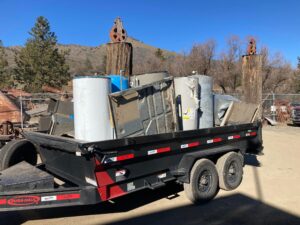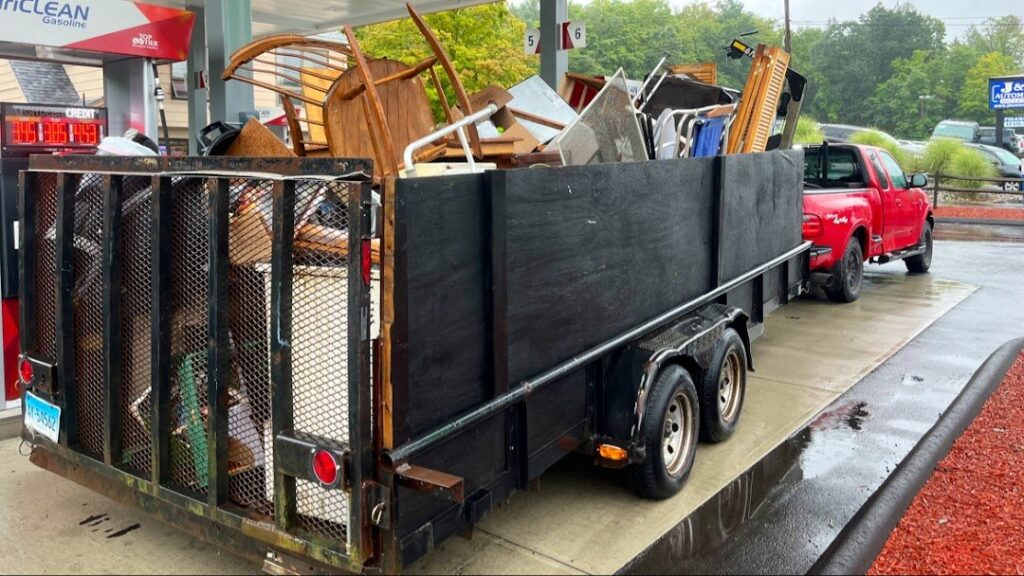The Environmental Impact of Junk Removal: A Closer Look
In today’s fast-paced, consumption-driven world, junk removal has become an essential service in both urban and rural settings. From household waste to construction debris and old electronics, the types of junk generated are vast and varied. While junk removal services provide convenience and help maintain cleaner living environments, there is an often-overlooked side to this process: the environmental impact. Understanding how junk removal affects the planet can help individuals and businesses make more conscious choices about their waste and its disposal.

The Growing Volume of Waste
The amount of waste generated globally is staggering and only continues to rise. With increasing consumerism and the throwaway culture dominating many societies, the lifespan of goods has drastically shortened. Furniture, appliances, clothes, and even technology are being discarded at alarming rates. This has led to a growing dependence on junk removal services to handle the overflow of waste that municipalities are often unequipped to manage efficiently.
As the volume of waste grows, so does the burden on landfills and incineration plants. Landfills, in particular, have a significant environmental footprint. Not only do they consume vast stretches of land, but they also produce methane, a potent greenhouse gas. Leachate, the liquid that drains from waste, can contaminate nearby soil and water sources, posing a threat to ecosystems and human health.
Transportation and Carbon Emissions
One aspect of junk removal that is frequently overlooked is the transportation involved. Trucks used in junk removal services travel long distances to collect, sort, and dispose of waste. This constant movement contributes to carbon emissions and air pollution. Additionally, older fleets that haven’t adopted fuel-efficient or electric vehicles exacerbate the problem by emitting higher levels of pollutants.
Efforts are being made by some eco-conscious junk removal companies to offset this impact by optimizing pickup routes, using low-emission vehicles, and promoting local donation partnerships to reduce the need for long-distance transport. However, such practices are not yet the industry norm.
Sorting and Recycling: The Hidden Challenge
A critical step in minimizing environmental damage is the proper sorting and recycling of waste. Many assume that once items are picked up by a junk removal service, they are responsibly sorted and recycled. While some companies take this extra step seriously, not all have the infrastructure or incentive to do so.
Sorting is labor-intensive and often costly, requiring trained personnel and facilities equipped to handle a variety of materials. Electronics, for example, contain both valuable and hazardous materials, and improper disposal can lead to toxic components like lead and mercury entering the environment. Similarly, construction debris such as concrete, wood, and drywall often ends up in landfills when it could be recycled or repurposed.
Unfortunately, without strict regulations or consumer demand for accountability, much of what is collected ends up being dumped instead of diverted. This highlights the importance of choosing junk removal services that emphasize sustainability and transparency in their operations.
The Role of Donations and Reuse
One of the most environmentally beneficial outcomes of junk removal is the potential for reuse. Items such as furniture, clothing, and even appliances can often be donated or refurbished rather than discarded. When junk removal services collaborate with local charities or recycling centers, they play a vital role in extending the lifecycle of items and reducing the demand for new resources.
Encouragingly, there has been a growing trend among environmentally responsible junk removal companies to prioritize donations. This not only lessens landfill waste but also supports communities by providing useful items to those in need. Individuals can further contribute by sorting their junk in advance, setting aside items that are still in good condition for donation rather than mixing them with general waste.

A Call for Greater Awareness and Responsibility
The environmental impact of junk removal is not solely the responsibility of service providers. As consumers, we also have a critical role to play in minimizing waste and making informed decisions about what we throw away. This includes embracing more sustainable habits such as repairing instead of replacing, buying second-hand, and reducing unnecessary purchases.
Moreover, it is important to ask questions when hiring a junk removal service: Do they recycle? Where do they take the waste? Do they partner with donation centers or environmentally focused organizations? By demanding greater accountability and transparency, consumers can drive change in the industry and help shape more sustainable waste management practices.